In what can only be described as one of my biggest gaffes, a complete failure of my brain function, I’d never taken my kids to the Korean National Museum in our 5 visits to Seoul. In fact, I’d never been there myself—shaking my head with disbelief.
This time, it was the first item on my list, not shopping, not Jejudo, not anything else. But to think that my first daughter (in Chicago currently) is the one (of the three) that actually likes the museum visits… sigh…
Anyway, conclusion first. If you ever find yourself in Seoul, please make an effort to visit the National Museum of Korea. I guarantee that you won’t regret it.
I didn’t mean to, but I ended up marking the location of the museum with an exclamation mark, directly south of the Gyeongbokgung Palace. (I’ve brought my 10-year old Dell laptop and it’s been a struggle editing photos and picture files…)
The admission is free and it’s located right next to the Ichon (이촌) Subway Station on the Blue Metro Line (4th Line). This is where my wife used to live before we got married, so this general area means something extra special to me.
Take the exit number 2, and you will walk through underground path leading directly to the museum.
The grounds on which the museum stands used to be the American Armed Forces base since the Korean War. It’s a huge area right in the middle of Seoul and of prime location. It’s now surrounded by greenery, sort of New York’s Central Park like. I would have loved to walk the park but the weather in Seoul is still not cooperating—we went straight inside into the main exhibition hall. Late October is the time to come, me thinks.
The pond water was a bit filthy but the ambience is patently Korean.
When I was looking at the pictures of the front entrance of the museum back home in LA, it got me wondering why they had this huge opening right in the middle of the building. The answer was very plain and obvious. Although you can’t quite see it in the above picture, as you walk up to the front entrance, there was the perfect view of the Namsan Tower, the Seoul landmark for the past 50 years.
This is Gyeongcheon-sa (경천사) Buddhist Temple’s 10-story high stone pagoda, one of the very rare granite pagodas in all of Korea, that was built in 1348 during the late Goryeo Dynasty that stands in the grand hallway of the main exhibition hall. It’s the real thing, not a replica—it was returned to Korea in 1918 by the works of British and American journalists after being illegally taken to Japan during the Japanese Occupation era.
Like most museums, the main exhibition hall with permanent collection is organized into separate chambers according to the time periods, with each chamber leading to the next dynasty and so on.
The gold and silver crowns, earrings, and other decorative pieces are nice to look at but they don’t really speak to me as much as…
… these two burial urns from the 6th century Baekje Dynasty. Despite the fact that they are about 1500 years old, look how well-preserved these are—they maintained their original shape and condition. What got to me was the writing that was found with the urns.
전생에 맺은 인연으로 / 이 세상에 함께 났으니 / 시비를 가릴 양이면 / 서로에게 물어서 공경하고 절한 후에 / 사뢰러 오십시오
Through our karmic ties made in our past lives / we were born of this world together / if there is a marital argument to be made / respectfully ask and bow to each other / then come and talk to me
(** note on the translation: this is the best I could do, but after reading it, it sounds like “Let’s settle any argument in a gentlemanly manner in the netherworld.” But the connotation is completely lost in the translation—it’s more like a love poem, confessing how precious this life’s marriage was, and hopeful that we would remain respectful and have a chance to meet again on the other side.)
Moving on (because there are so much to see).
This is chimi (치미), again from the 6th century. These are ornamental ends of the roof tiles of a Buddhist temple. As you can see, they are massive. Decorated with lotus flower, clouds, grass, and tree branch shapes. Those kids in the background were actually paying attention to the docent. How often do you see that?
Various pottery from Shilla Dynasty, 6th ~ 8th century.
Again, old laptop issue with my piss-poor job of drawing the current Korean borders in blue line. In the 8th and 9th century Korea, lesser-known, but ethnic Korean nonetheless, dynasty called Balhae (발해) controlled most of Manchuria and a big portion of eastern Russia, including today’s Vladivostok.
I’m going to take a little detour at this point, instead of following through the timeline of dynasties. The main exhibition hall is basically 3 stories high. 1st floor is the main exhibition of different dynastic artifacts, 2nd floor is consist of Room of Quiet Contemplation, Paintings and Calligraphy, and Donated Collection. I wanted to show you something in particular.
As you walk in to the chamber, it’s got this panel of names…
… who have graciously donated their personal possessions to the cause of National Museum of Korea, for all to share.
What humbled me and made me infinitely grateful, are these foreign names. You see all these American names, some European, and many Japanese names also. I was standing here going though most of the name plates, in awe and in appreciation.
A Japanese medical doctor and collector of Korean antiquities donated over one thousand roof tile decorative pieces called 수막새 (soo-mak-sae), the newest of them being a few hundred years old, and most of them more than a millennium old.
There was one very odd item that did not seem to belong in a Korean museum, until you learn of the backstory. It’s this Greek soldier’s helmet from the 6th century BCE. It was donated by 손기정 (Son Ki-jeong) who won the marathon as a Japanese athlete in the 1936 Berlin Olympics. You can read the full story about it here.
One half of the 3rd floor is all about foreign artifacts, Mesopotamian, Chinese, Japanese, and so on. And the other half of the 3rd floor was, to me, the gem of the entire building. Not a lot of visitors made it up to the 3rd floor as the crowd seemed to pay less and less attention as we went up.
The section of Sculpture and Craft was mesmerizing.

Goryeo celadon (= jade green pottery) is ultimate in its artistic form and value, for authentic ones are traded at minimum of couple of million dollars, USD.
Joseon pottery, on the other hand, isn’t jade green but rather off-white. It apparently takes more advanced skills and represents the “sign of the times” in that Joseon preferred austerity and practicality over artistic beauty.
Getting back to the 1st floor again, let’s take a look at a few more items that drew my interest.
You saw it right, those are belt buckles made out of pure gold, from the 6th century.
The oldest metal type in the world, Jikji (직지), decades before Gutenberg.
What do those two small cubes on the left look like? Yeah, those are dice from the 13th century, found in a sunken ship (never mind the number written on it). The round pieces on the right are the stones for the game of baduk (바둑, or more commonly known as “go,” Japanese word), and the broken piece above is a part of the baduk board.
Finally, one of the very first Taeguk-gi used by the Korean Empire (대한제국), circa early 20th century.
I’ve probably haven’t even scratched the surface with showing you what the museum has on display. So much to see, so much to learn, so little time.





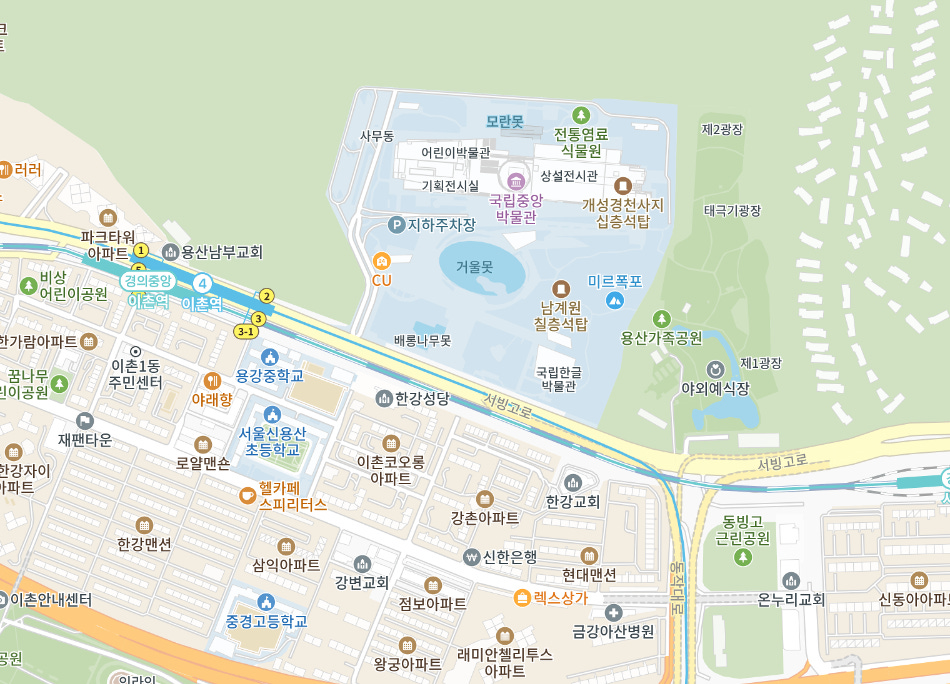
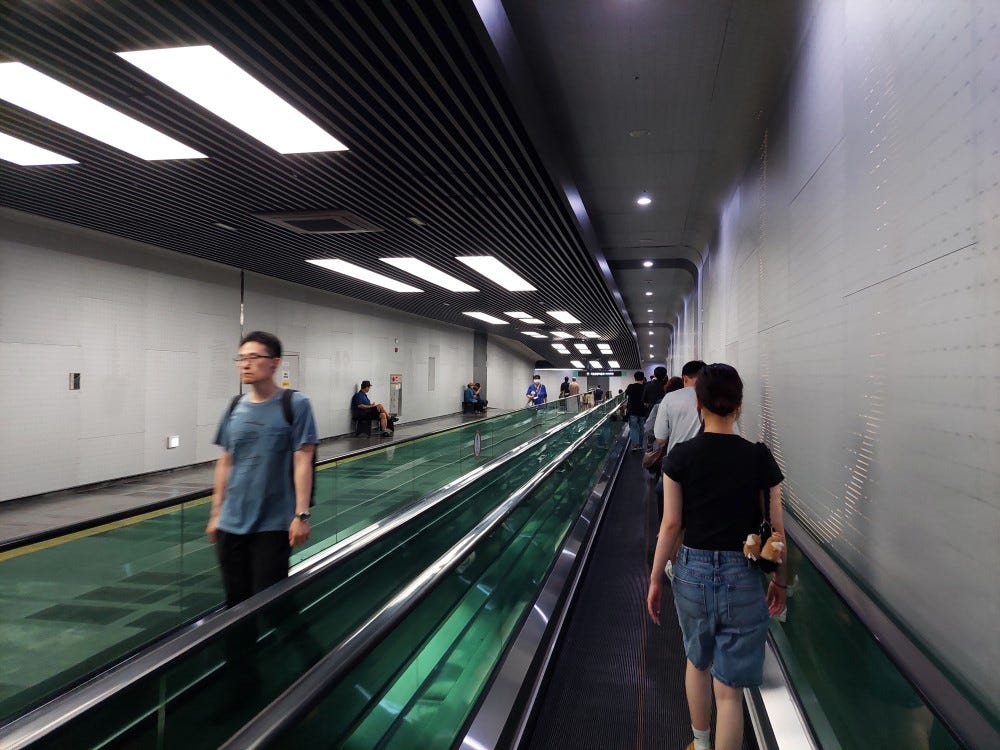
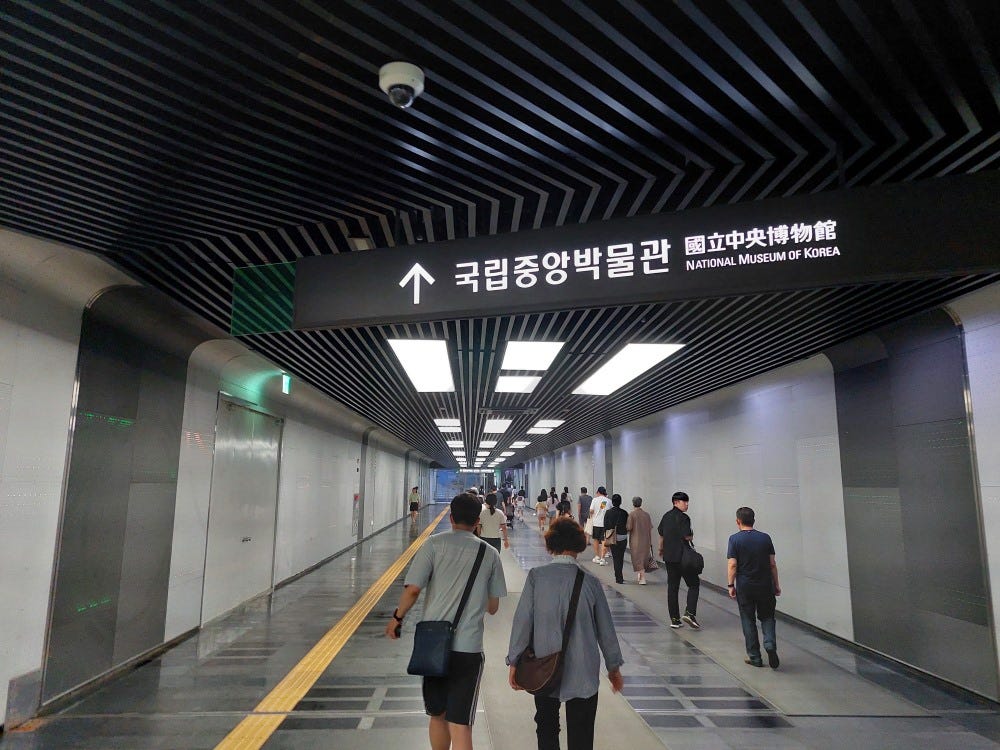
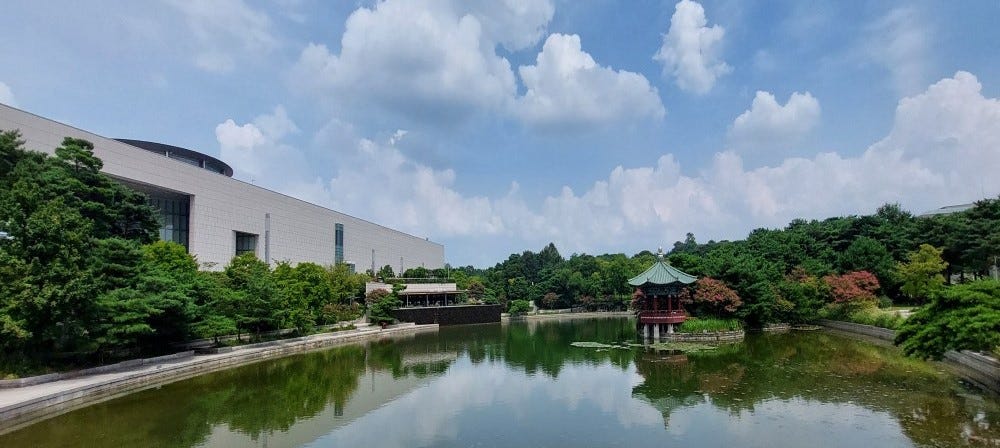

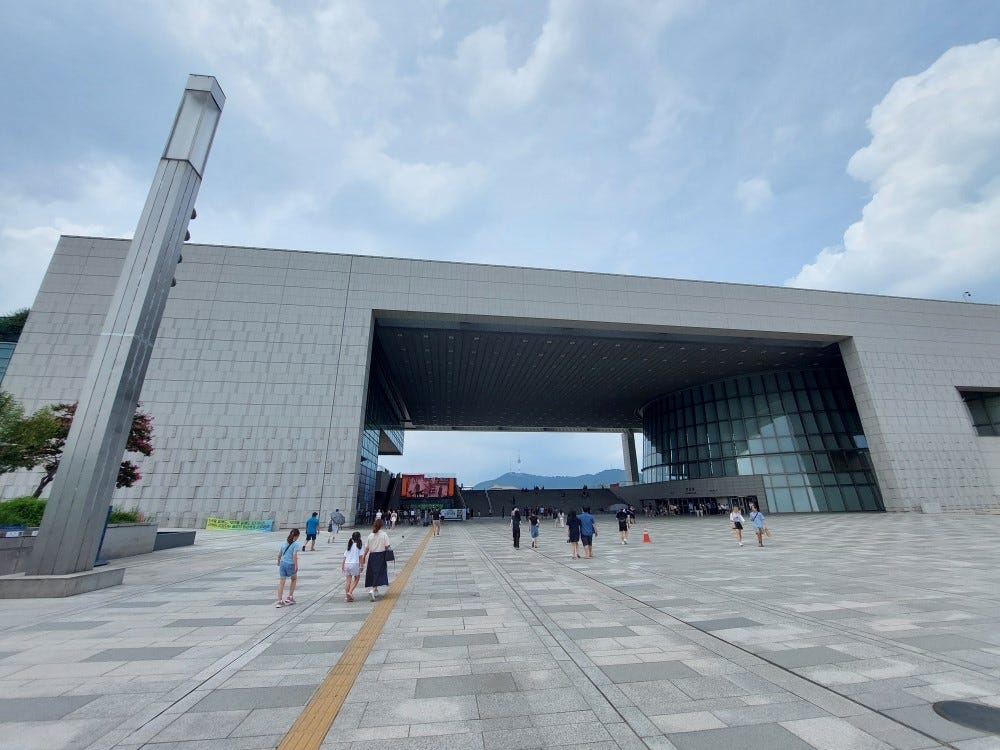

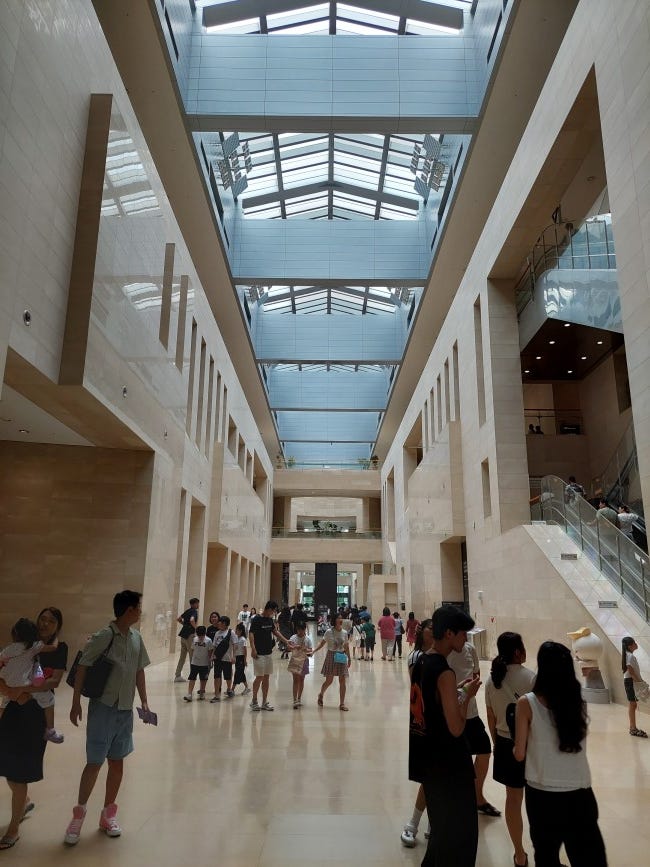
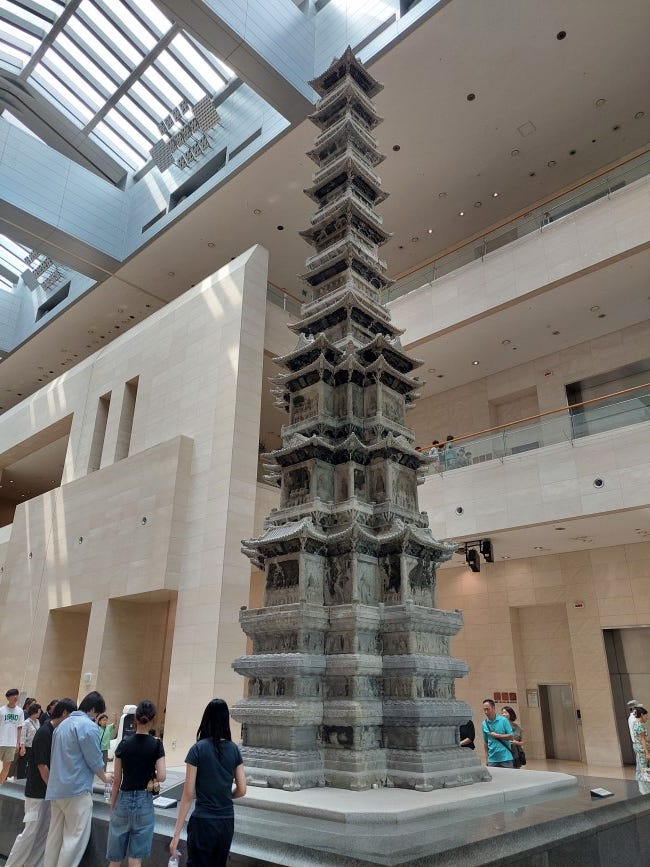
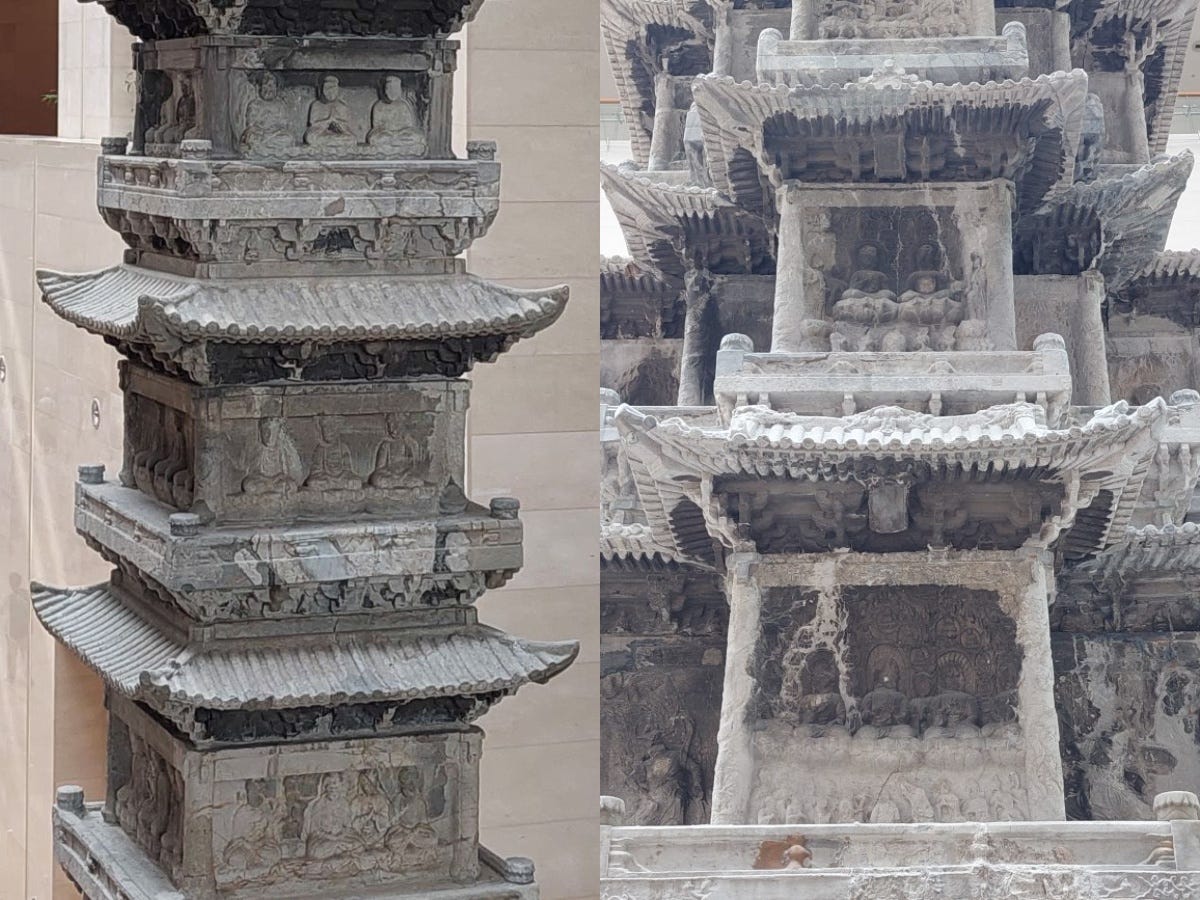

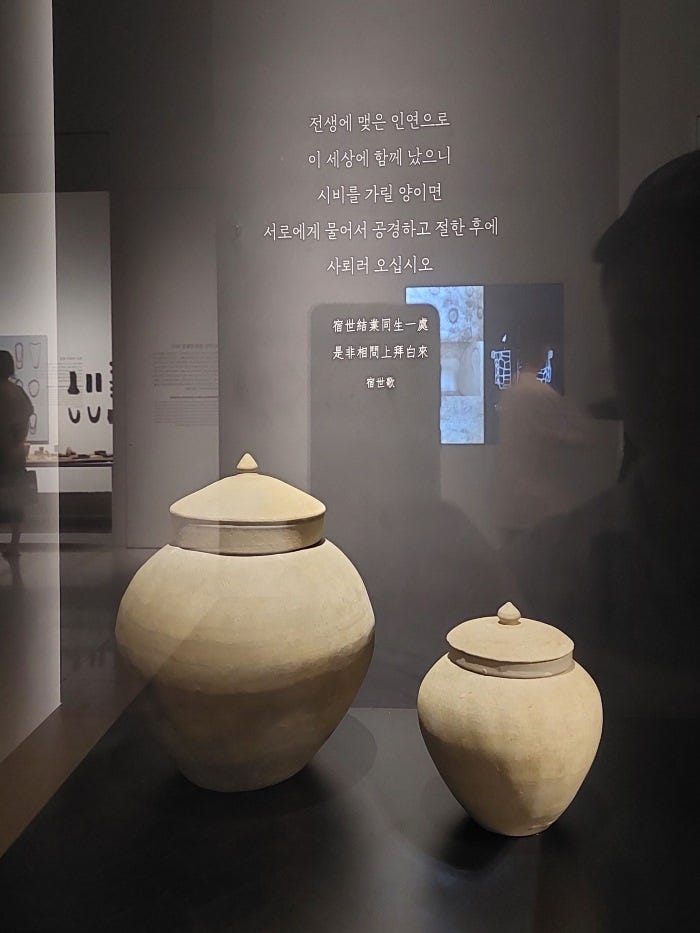

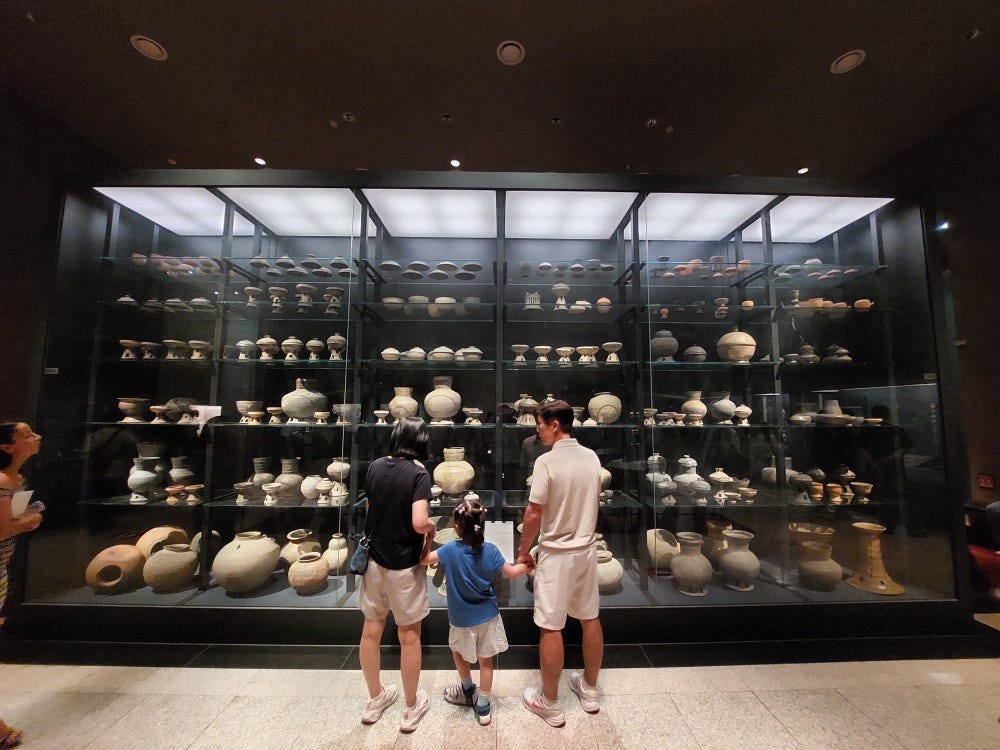
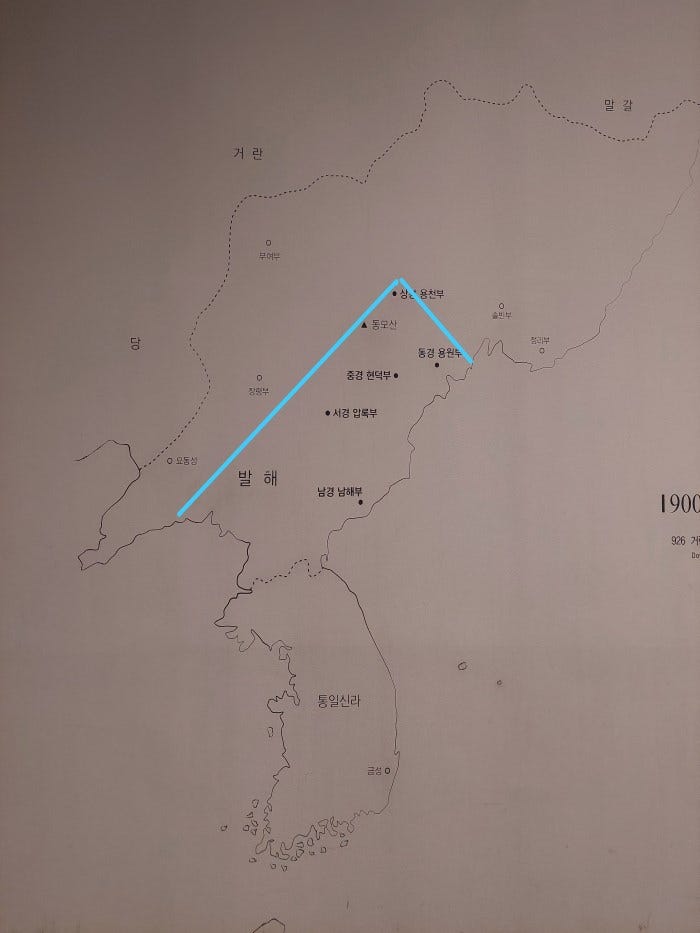
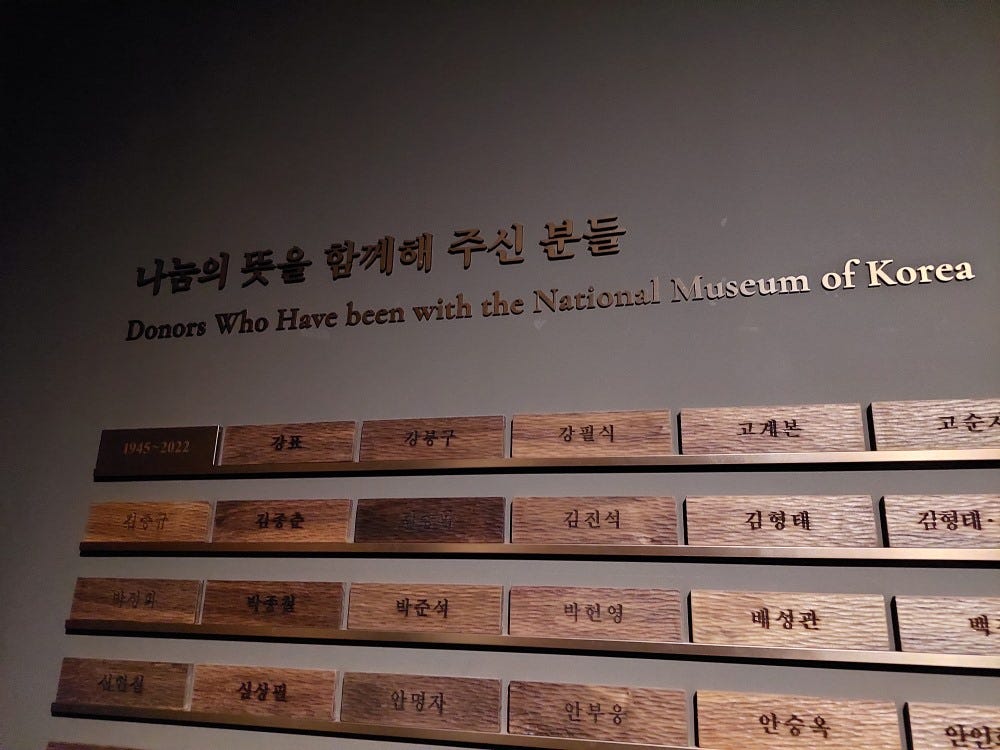




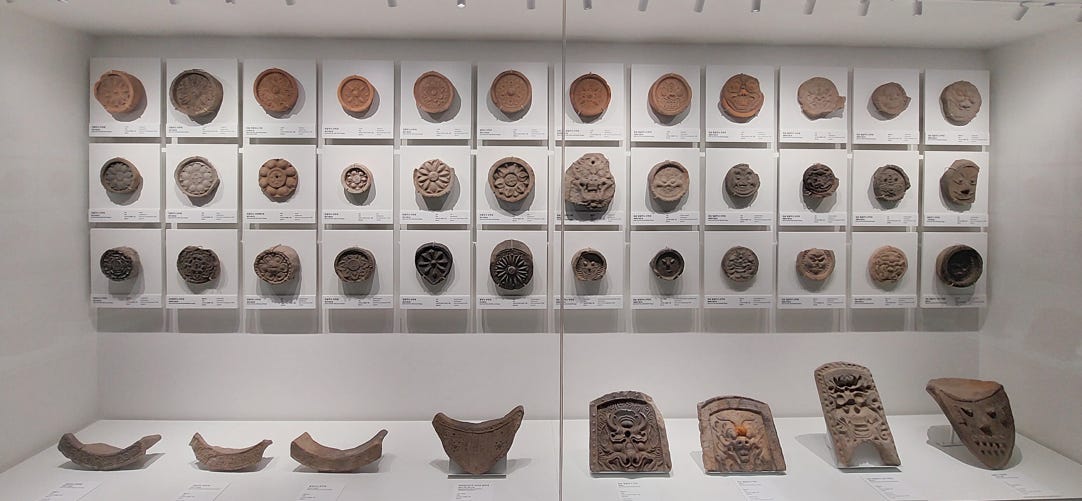

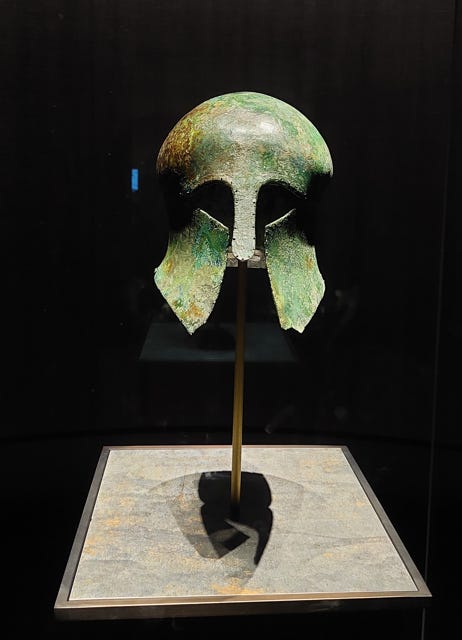

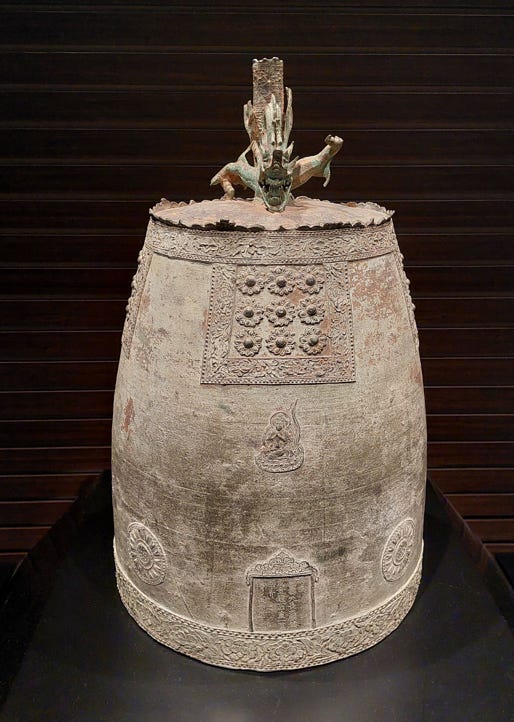






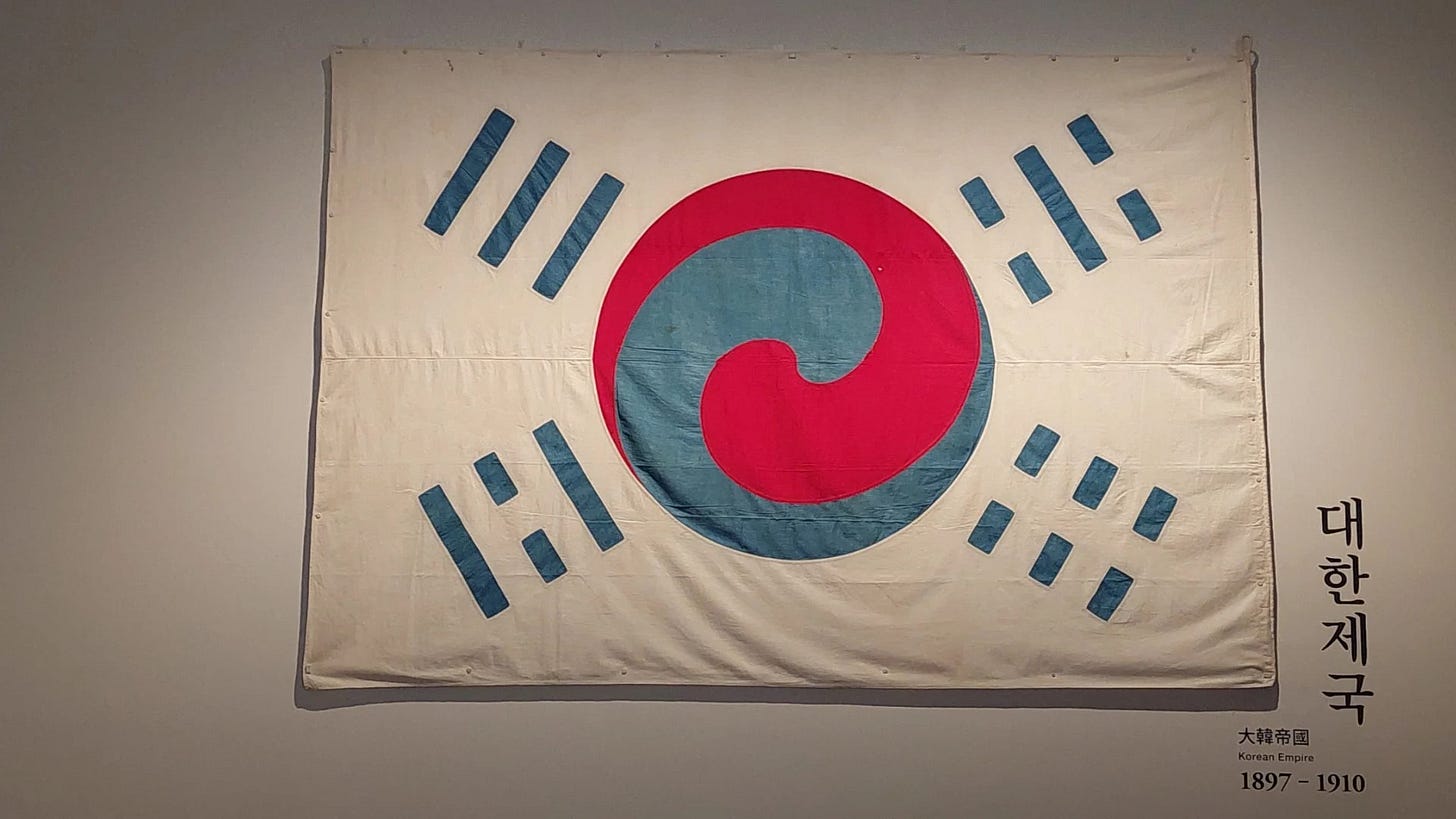
Thank you for the great write-up. I went on each of my last two trips to Korea. So many amazing artifacts, and the open space that frames Namsan is fantastic. Another museum I found very interesting is the Seodaemun Prison. Have you ever been? Btw, curious as to how old your kids were when you first took them to Korea? Mine are 10 and 7...debating if I should wait until my youngest is around 10.
Thank you for taking us through the museum with you and your daughters. It is fun & interesting [재미] to see the museum through another person's eyes.